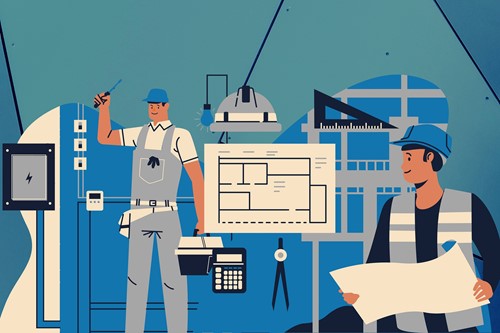
When dealing with blueprints and contractor jargon, it can feel like you're trying to read another language. Rather than suffer misunderstandings and end up with a newly renovated space that doesn't meet your needs, it's important to close the communication gap. Here are some tips for understanding blueprints and contracting terms so you can get the best results.
Blueprints are more than just guidelines: they are precision drawings that reflect the final outcome. A typical blueprint includes all the exact measurements of structural elements and floor plan space. Blueprints for new home construction and sometimes renovation projects use some of these common terms:
As you can see, terms such as scale and line weight mean specific things in the construction sector. If you hear other words that seem out of context, don't hesitate to clarify the meaning with the construction professional. Many experienced contractors understand they need to translate insider terms into everyday language.
With a basic understanding of the blueprints in hand, consider working with a copy in the space before construction begins. Lay the blueprints out and measure things such as cabinet dimensions, center island square footage, toilet placement, vanity dimensions and foot traffic pathways. Write down the exact feet and inches of these and other important elements of your renovation.
Now that you have a list, you can get a real-life grasp of the proposed layout. In a kitchen remodel, consider measuring cabinet and center island placement. Mark the floor with tape to create a map of the future living space. Take a moment and walk through it while imagining how it functions in terms of meal preparation, family gatherings and foot traffic. Countertops and vanities can also be mimicked by using cardboard materials or boxes.
Before proceeding with demolition and a makeover, make sure you will feel comfortable with your future living space. The cost of redrawing the blueprints pales by comparison to not maximizing the potential or your home.

Every one of my clients is unique, and that is exactly how I treat him or her. I'm proud to say that a high percentage of my business comes from past clients and referrals from people who choose my services time and again. I don't measure my success by sales, but by the relationships I build along the way.